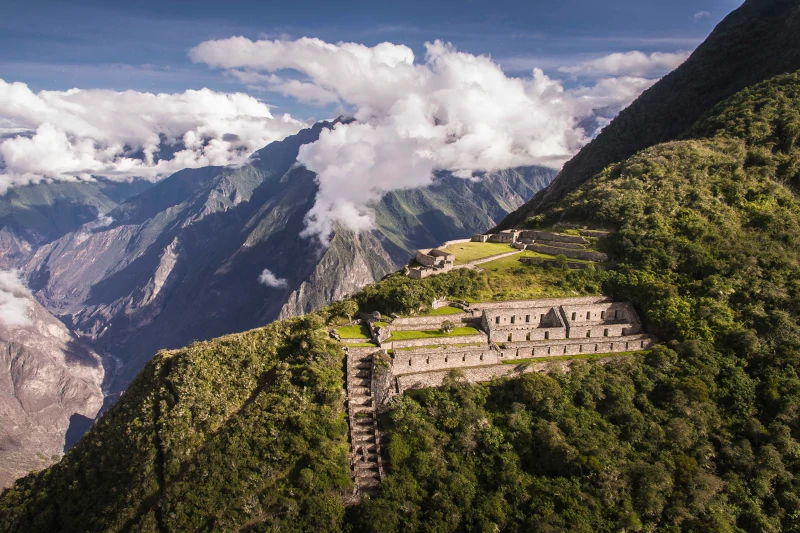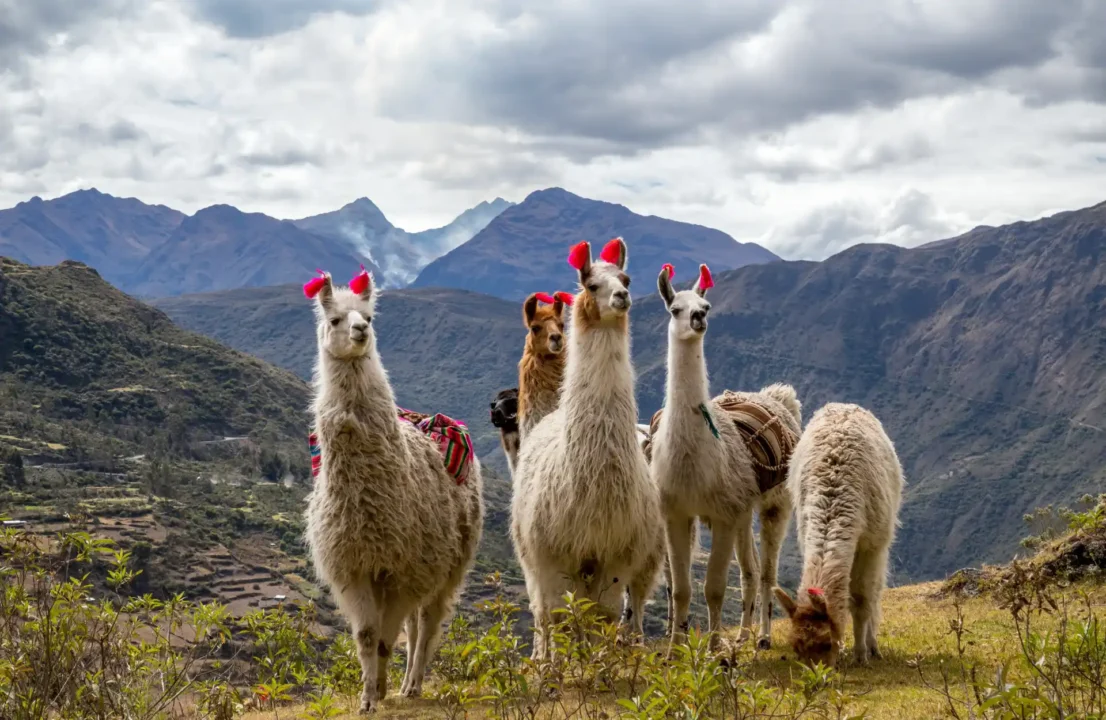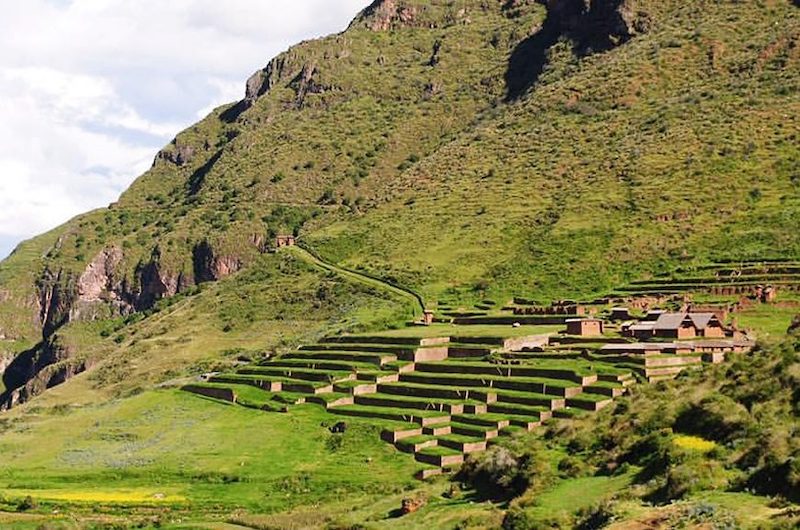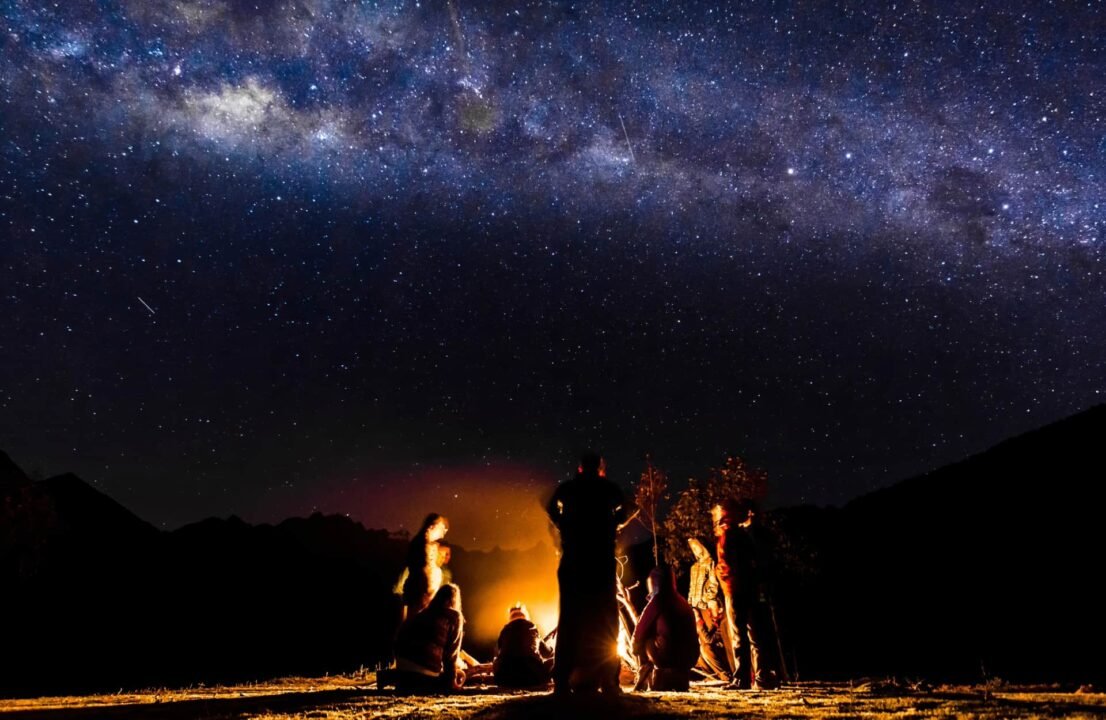Salkantay Trek (5 Days)
Adventure Tours Peru
12 people
5 Days
Español, English
If you’re a thrill-seeker who revels in the world’s best trekking routes such as the ones Peru Jungle Trips cover, our Classic Salkantay Trek 5 Days awaits you.
It seamlessly intertwines exhilarating trails with breathtaking scenery, promising an unforgettable adventure. Whether you’re flying solo, with a partner, or part of a group, this trek is tailor-made for you.
Prepare to traverse snow-capped peaks before descending into the enchanting cloud forest, eventually winding your way through the verdant Peruvian jungle toward the iconic wonder, Machu Picchu.
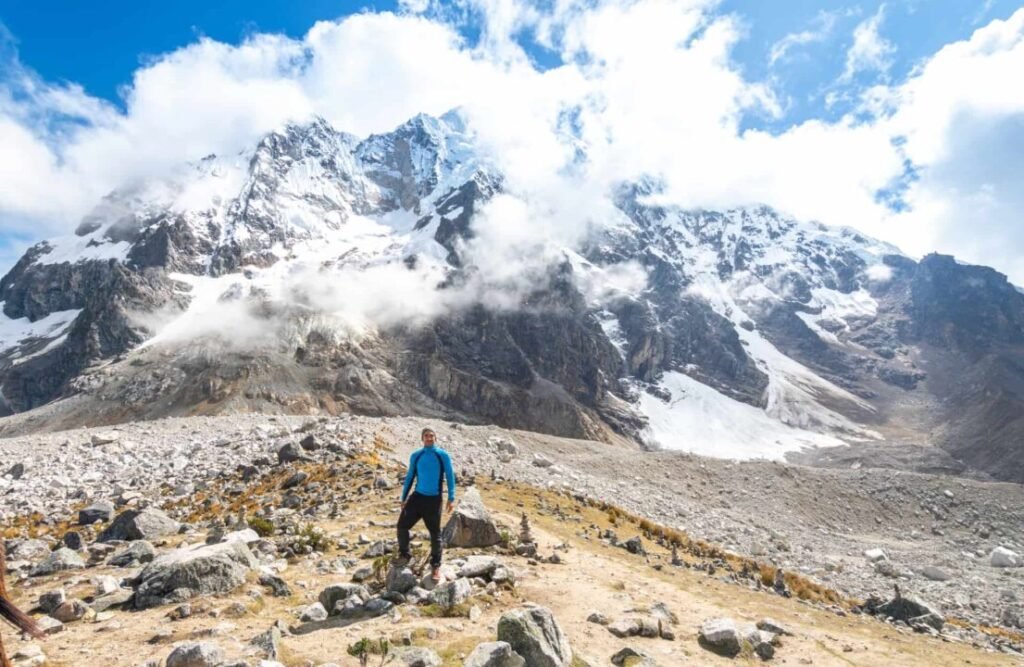
The dramatic shift in landscapes and climates renders this trek a truly unique experience.
Immerse yourself in awe-inspiring vistas and tick off destinations from the bucket lists of many travelers. Day 1 treats you to a trek to the mesmerizing Humantay Lake, nestled like a sapphire amidst the snowy panorama.
But the excitement doesn’t end there. Conclude your epic journey with a visit to the fabled Lost City of the Incas, Machu Picchu.
Enjoy a guided tour spanning about two hours, followed by an ascent to either Huayna Picchu or Machu Picchu Mountain. From there, soak in a panoramic vista of the Citadel, feeling as if you’re soaring like a condor and journeying back centuries to envision life in ancient times.
.Don’t let the chance slip away—embark on our Classic Salkantay Trek to Machu Picchu and make memories to last a lifetime.
Itinerary
Day 1: CUSCO – MOLLEPATA – SORAYPAMPA
We’ll pick you up from your hotel in Cusco between 4:30 am and 5:00 am to take a bus to Mollepata.
We’ll embark on a breathtaking scenic journey through the plains of Anta with stunning panoramic views of the majestic Salkantay and other snow-capped mountains, as well as the Apurímac River Valley.
Breakfast stop in Mollepata before Challacancha. Stretch, rest, grab supplies. Join us for a seamless Salkantay adventure! There we’ll meet our support staff who will load the equipment onto horses and mules.
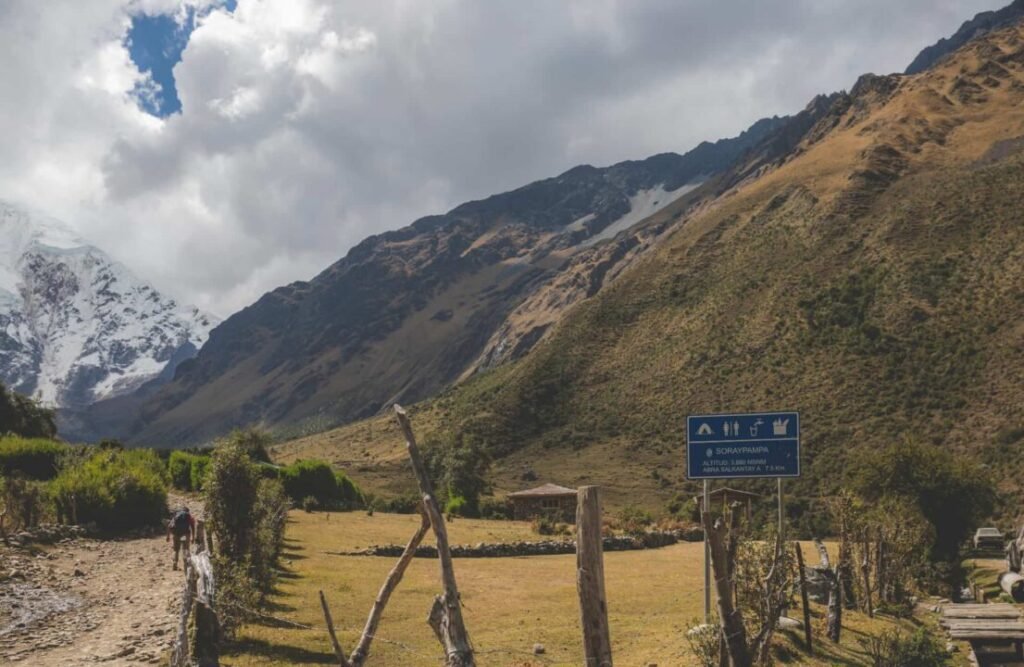
Around 9:30 a.m., we’ll start our hike to Soraypampa (3900 meters above sea level). If we maintain a steady pace, it will take about 4 hours to reach Soraypampa, the first campsite (with glass domes and cabins offering a very pleasant panoramic view), where we’ll have lunch.
After lunch, in the afternoon, we’ll visit Humantay Lagoon (4200 meters above sea level), which requires a 3-hour round trip hike from the campsite to see the Humantay glacier lagoon.
A delicious and comforting dinner awaits us in the evening.
Day 2: SORAYPAMPA – SALKANTAY – HUAYRAMACHAY – CHAULLAY
In the wee hours of the morning, we’ll gently rouse you with a steaming cup of coca tea. As the clock strikes 5:00 am, a hearty breakfast awaits, signaling the start of what promises to be the most challenging day of the Salkantay trek.
At around 6:00 am, we’ll set out, ascending towards the pinnacle of our journey.
Trek 6km uphill through rocky mountains with Mount Salkantay as backdrop. Join us for an unforgettable journey!
Upon reaching the summit, a breathtaking panorama unfolds before us, showcasing the rugged grandeur of the mountains and the snow-capped peaks of Salkantay, standing tall at 6264 meters above sea level—the second highest in the Cusco region.
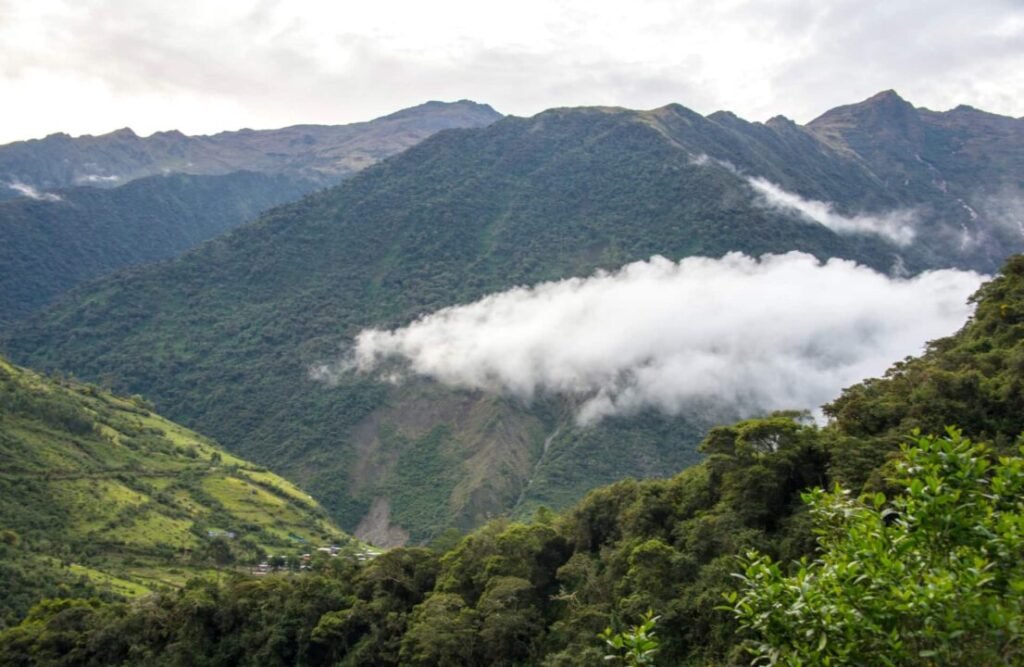
After a leisurely descent of approximately 2 hours, around 1:00 pm, a sumptuous Peruvian lunch awaits us at Huayracmachay.
We continue to Chaullay, a gentle 3-hour downhill walk to our campsite at 2900m altitude. Recharge and enjoy the journey!
Here, amidst the rustic charm of indigenous cabins, we’ll settle in for a well-deserved rest. Come 7:00 pm, a hearty dinner awaits, a fitting reward for conquering the trails of the day.
Day 3: CHAULLAY – COLLPAPAMPA – LA PLAYA – LUCMABAMBA
At 6:00 am, we’ll kick off our hike towards the quaint village of La Playa, threading through the Santa Teresa Valley.
You’ll soak in the freshness of this new landscape during our 6-hour trek today. Along the way, we’ll be treated to a tapestry of sights including rivers, waterfalls, wild orchids, and plantations of coffee, banana, and avocado.
Don’t miss the chance to sample the renowned passion fruits and granadilla en route.
We’ll pass Colpapampa, a cloud forest village, for cascades, birds, hot springs, fruit trees, and diverse flora and fauna.
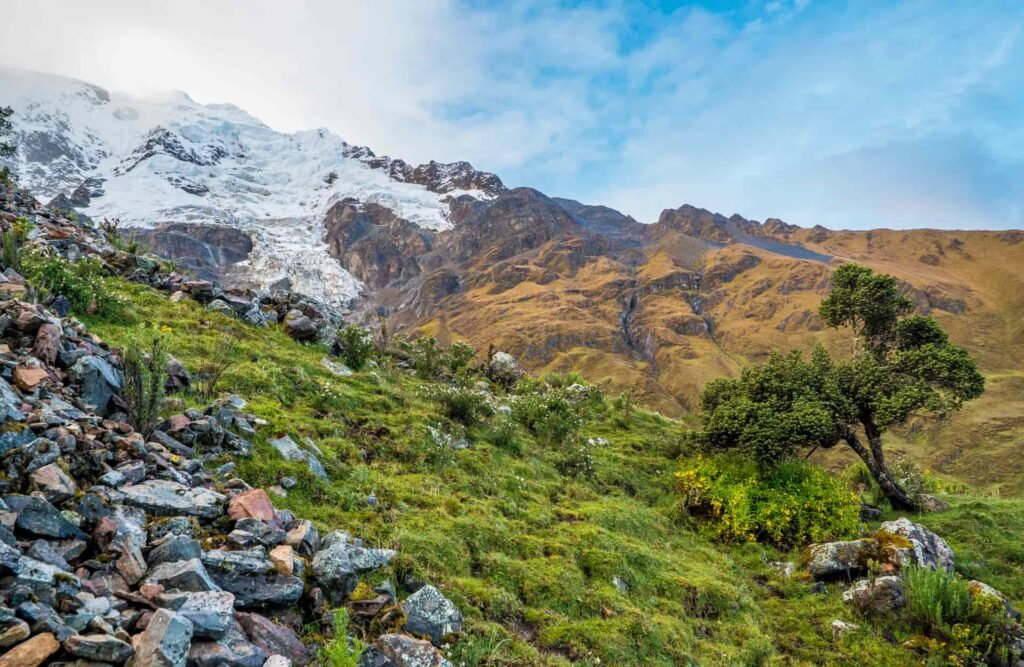
La Playa
With a stroke of luck, we might even catch sight of the splendid “Cock of the Rock,” Peru’s national bird. After a hearty lunch at La Playa, a brief 20-minute walk will bring us to our base camp nestled in Lucmabamba capsules.
We take pride in being the sole travel agency offering this unique camping experience in the region (2400 meters above sea level). We’ll delve into the tropical forest for a spell and visit an organic coffee plantation.
For coffee aficionados, this will be nothing short of heavenly—you’ll have the chance to savor freshly brewed coffee made by the locals! If coffee isn’t your thing, fear not; you can still relish the decadent aroma of freshly roasted and ground coffee wafting through the air.
Coffee stands as the primary agricultural industry for the locals in the jungle, with vast hectares devoted to its cultivation for export to the United States, Asia, and Europe.
Though coffee was first discovered in Ethiopia, it wasn’t until the Spanish invaded Cusco that it found its way to this region.
Day 4: LUCMABAMBA – LLACTAPATA – HIDROELÉCTRICA – AGUAS CALIENTES
Just like the mornings before, the trek’s chef will rouse you bright and early with a comforting cup of coca tea.
As you gear up for today’s adventures, relish in your final breakfast skillfully prepared by our talented trekking chef. We’ll commence our hike early, offering you the chance to experience a snippet of the famed and revered Inca Trail.
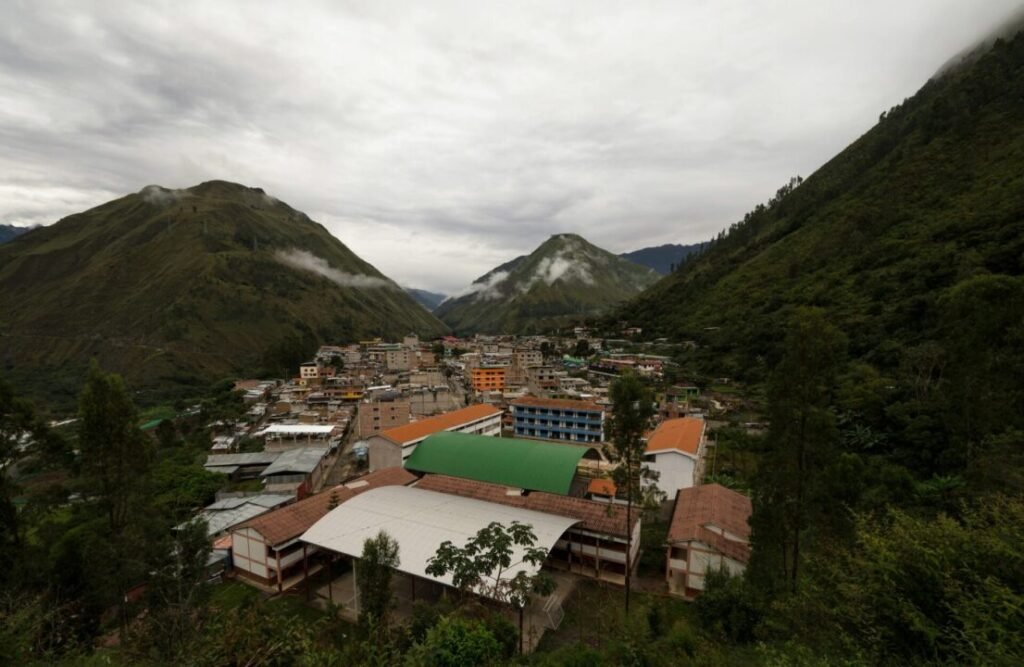
Following a breathtaking 2-hour ascent with stunning vistas of the Santa Teresa Valley, we’ll arrive at the Inca site of Llactapata, directly facing Machu Picchu. This marks our first encounter with the enigmatic Lost City of the Incas!
It’s a profoundly special place to explore together, delving deeper into the roots and history of this land. From this vantage point, not only will we behold the ruins of Machu Picchu, but also Huayna Picchu and Machu Picchu Mountain.
Guided by our expert, we’ll unravel the tales of the Incas who once inhabited and revered this land. Of course, ample time will be given to capture these memories through photographs, ready to be shared with loved ones back home.
LLactapata
Following our visit to the Llactapata ruins, we’ll continue our trek with a leisurely 2-hour downhill walk. Along this stretch of the trail, the iconic silhouette of Machu Picchu will remain a constant until we reach the Hidroeléctrica train station for lunch.
One of the area’s most striking features is the natural 300-meter-high waterfall, generating electricity for the entire Cusco region. Post-lunch, we’ll arrive at Intiwatana, a renowned ancient rock used as a sundial during the Inca era. Legend has it that Intiwatana worked in conjunction with the famous sundial stone at Machu Picchu.
These two stones were utilized to measure and interpret the winter solstice, heralding the start of the new planting season for the Incas.
After this intriguing encounter with Inca history, we’ll reach the train tracks leading to the town of Aguas Calientes. Here, you’ll have two options: 1) If you’re feeling weary, you can opt to take the train to Aguas Calientes (additional $38.00). 2) If the wanderlust still beckons, we can trek from Hidroeléctrica to Aguas Calientes along the train tracks, a 3-hour journey through the warm embrace of the cloud forest.
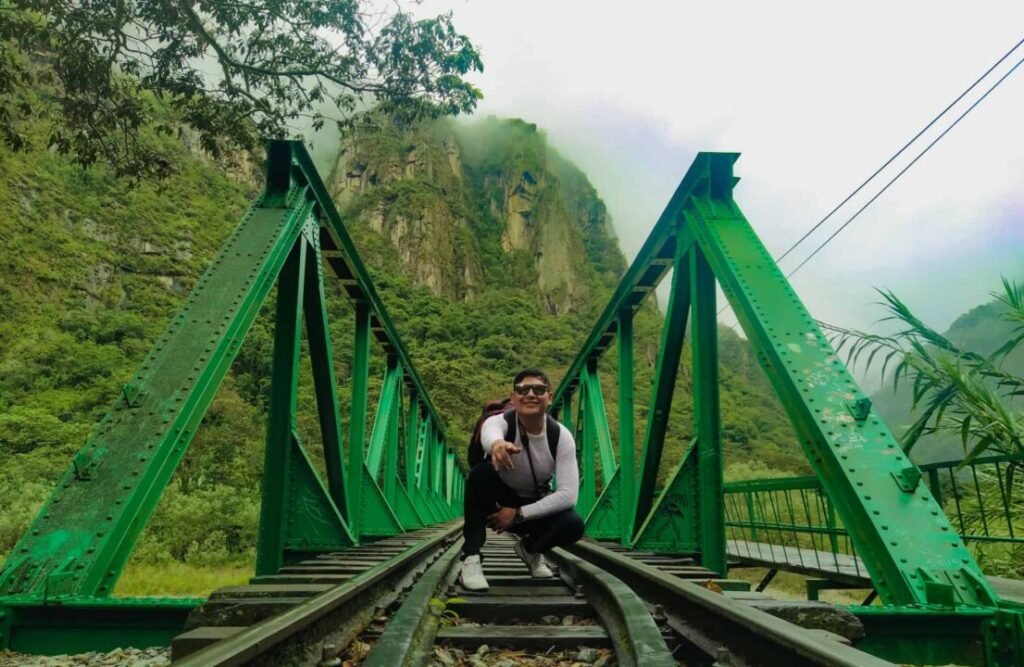
This very path was once traversed by American professor Hiram Bingham, who rediscovered Machu Picchu after centuries of being lost to the outside world.
Note: During the rainy season, hiking along the Llactapata Trail is not guaranteed 100% due to safety concerns. When heavy rains are frequent, this trail becomes highly perilous.
Day 5: MACHU PICCHU – CUSCO
Today signifies the eagerly anticipated culmination of our trekking expedition, leading us to the illustrious Machu Picchu—a site hailed as one of the New Seven Wonders of the World and honored as a UNESCO World Heritage Site.
With the dawn breaking after a restorative night’s rest at our lodge, we’ll seize the opportunity to outpace the crowds, ascending to the pinnacle of Machu Picchu to bask in its tranquil allure amidst the gentle morning glow.
Opening its gates from 6:00 am to 3:00 pm, Machu Picchu awaits our footsteps. Opting for a leisurely stroll (with a bus ride available for $12.00), we’ll venture into the hidden realm of the Inca’s Royal Citadel. Here, a two-hour guided exploration will unravel the mysteries of this ancient city, unveiling its temples, terraces, palaces, priestly abodes, sundial, industrial precincts, and verdant agricultural lands.
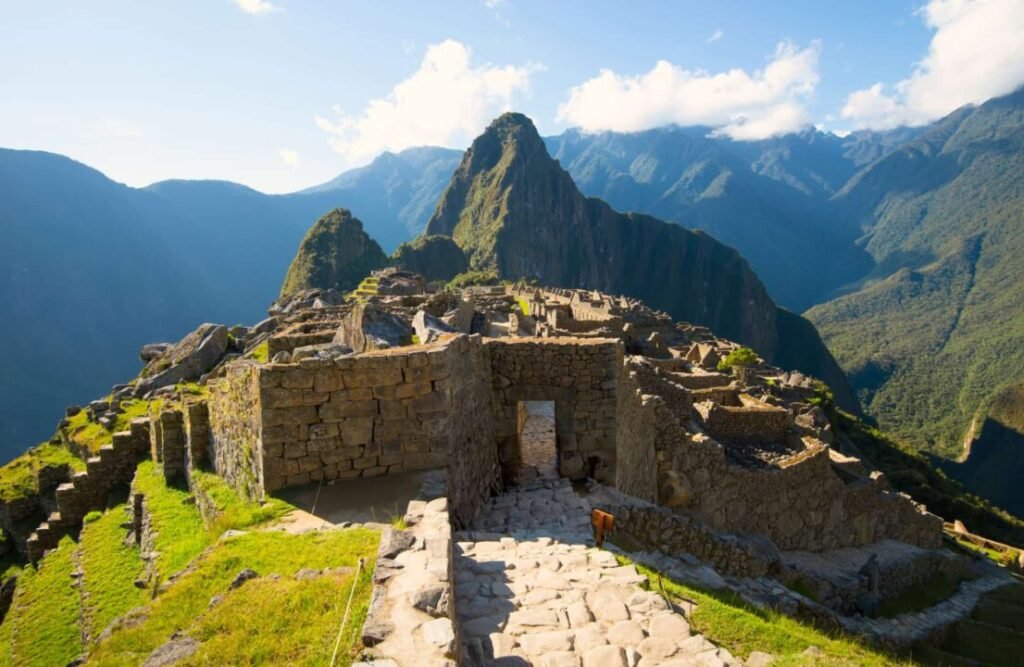
Behold the marvels of Inca engineering, a testament to their foresight and innovation, which remains partly shrouded in enigma even today.
Crafting a sustainable and picturesque community on the mountainside, devoid of modern tools or iron, stands as a testament to their ingenuity. Water, channeled through intricate canals, flowed through the streets, a lifeline for its inhabitants.
When a Peruvian guide introduced this site to Hiram Bingham, it was a verdant wilderness, hardly recognizable and in dire need of restoration. Since then, painstaking efforts have revitalized Machu Picchu, safeguarding its legacy for the world to cherish.
Huayna Picchu Mt. and Machu Picchu Mt.
Post-tour, the opportunity beckons to ascend either Huayna Picchu or Machu Picchu Mountain (advance ticket booking recommended). Each ascent and descent requires approximately three hours, leaving ample time to immerse oneself in the enchantment of this ancient citadel before descending to Aguas Calientes.
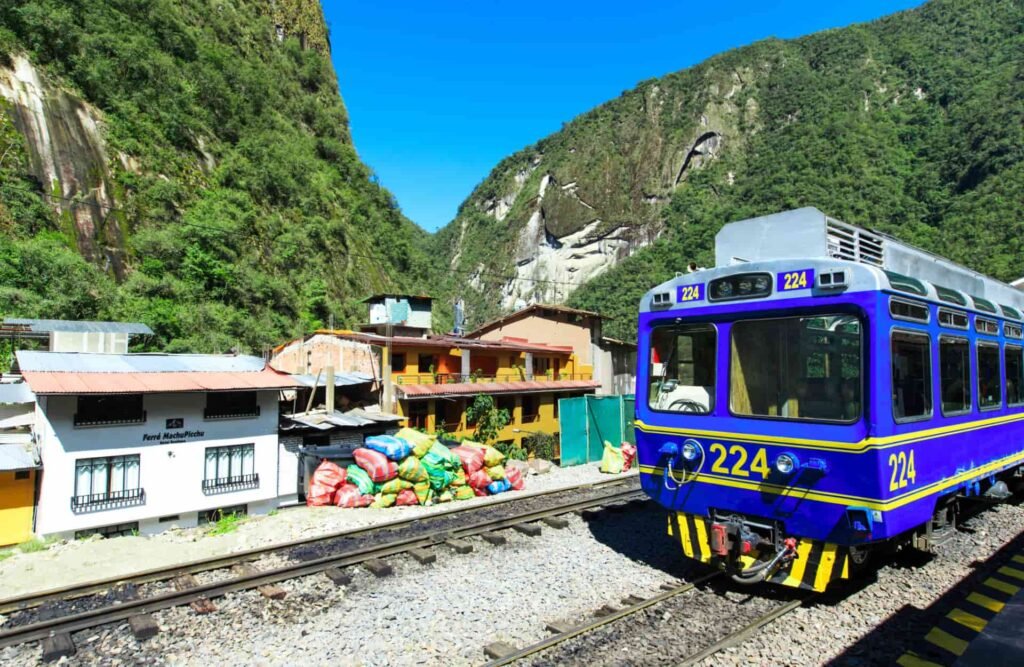
There, awaiting our departure at either 4:22 pm or 6:20 pm (depending on availability), a group minivan will transport us to Ollantaytambo, from where we’ll journey back to Cusco. Rest your weary limbs and body now, for though the physical exertion may cease, the memories forged will endure, enriching your spirit for weeks and years to come.
Included
- Professional Guides
- Briefing at our office.
- Emergency Horse
- Hotel
- Transportation
- Equipment
- Food, Lunch the last day is not included.
- Water
- Extras: small pillow to sleep with, a foam mattress, a day pack and a rain poncho.
- Satellite Phones
Not Included
- Sleeping bag: USD $25
- Inflatable air mat: USD $20
- Walking sticks (pair): USD $20
- Huayna Picchu Mountain $ 35
Packing List
- Passport
- Valid, GREEN ISIC card (if you booked as a student)
- Good daypack (the smaller, the better)
- Water storage: Water reservoir like Camelbacks are encouraged – but enough for at least 2-3 litres.
- Comfortable hiking boots (lightweight with good soles)
- 2-3 wicking t-shirts
- 2-3 hiking pants
- 4 sets of undergarments and 4 sets of hiking socks,1 Fleece
- 4 sets of undergarments and 4 sets of hiking socks,1 Fleece
- 1 Warm, down jacket: gets very cold at night
- Headlamp: Essential
- Waterproof gloves (even if they are ski gloves, take them)
- Quick dry towel. We provide small ones, you might enjoy something a little larger
- Small bottle of soap: we provide warm water each day to clean – might make you feel fresh if you had a little soap.
- Battery Charger: There is no place to plug in while trekking!
- Large plastic bags: to help organise and keep clean from dirty
- Sleeping bag: Recommend down bags for -10C at least
- Sunscreen, face moisturiser, bug spray, handsanitiser, wet wipes, toothbrush and paste, toilet-paper
- Personal medication
- First aid kit: band aids, moleskin, etc
- No-hassle best price guarantee
- Customer care available 24/7
- Hand-picked Tours & Activities
Do not hesitate to give us a call. We are an expert team and we are happy to talk to you.
- +51 998 134 635
- [email protected]
SEE MORE RELATED TOURS
4 Days
From
4 Days
From
4 Days
From
5 Days
From
3 Days
From
4 Days
From
TripAdvisor Reviews
At Peru Jungle Trips, we work every day to exceed our travelers’ expectations. The reviews on TripAdvisor reflect the commitment, dedication, and quality we bring to every journey through Peru. Thanks to our clients’ trust, we continue creating unique experiences surrounded by nature and Andean culture.
Verified Jungle tour Amazing 2 day trip in to Manu National Park. The tour guide Raul and driver Percy were great. We saw so much wildlife, monkeys, tortoise, vultures, hummingbirds, sooo many birds. The accommodation at Bambu lodge was lovely and the night trek was fun. It really was a great experience. Would definitely recommend.Verified Increíble experiencia con Pedro / Perú Jungle Trips company - Machu Picchu vía Hidroeléctrica y Cusco Pedro me recomendó el tour a Machu Picchu por la ruta Hidroeléctrica entendiendo mi preferencia por caminar siempre que sea posible. Él escuchó mis preguntas y se le ocurrió el consejo apropiado. No solo eso, Pedro es muy conocedor de la historia Inca y lugares de interés relevantes alrededor de Cusco. Gracias a Pedro - pude visitar Saqsaywaman, Templo de la Luna y Kusilluchayoc!Verified Recorrido de 1 día por el valle sagrado 1 día tour por el valle sagrado fue impresionante. Muy recomendable. Aprende sobre cada sitio. Jhonathan era un guía turístico increíble. Amable, paciente y manteniéndonos a tiempo. Grite al conductor por la conducción dura también. ¡Recomendaría!Verified Tour de 4 días por el Amazonas Hicimos un tour por la selva de 4 días desde Iquitos y fue irreal! El tour estaba bastante bien planeado y el personal era muy servicial. Nuestro guía (Kev/Kevin) fue genial y servicial, estaba lleno de datos interesantes sobre el Amazonas, también es bastante malo. La comida y el alojamiento era genial también! No había muchos otros viajeros uniéndose a nosotros, pero todavía era increíble y se sentía bastante privado y especial, sin duda recomendaría!Verified Excelente tour Muy buen tour. Buena organización, el guía Rubén muy atento y siempre preocupado por nosotros. El cocinero Lucho nos sirvió platos típicos de la zona, muy ricos y buena preparación considerando que los hace en la selva.La agencia muy atenta y siempre con buena predisposición.Verified Special Valle Sagrado Tour Questo tour è stato veramente bello, interessante Ed economic. Altamonte raccomandabile x il servizio di questa agenzia. Pedro il proprietario Vi accogliera' familiarmente. Da non perdere.Verified Super expérience! Le magnifique treck pour Choquequirao s’est très bien passé avec cette agence. Pedro à l’agence a été très patient avec toutes nos questions. Le guide Jimmy était vraiment bien, dynamique, motivant et passionné par l’histoire du site. Tout était parfaitement organisé et Jimmy a adapté à notre rythme les étapes pour limiter la marche aux heures difficiles de soleil au zénith. Les étapes étaient très chouettes, on a toujours bien dormi et bien mangé avec des hôtes accueillants. Enfin, le muletier qui nous accompagnait était très agréable et prenait bien soin de ses chevaux, ce qui était très important pour nous. Tout était parfait! Nous recommandons!Verified Viaje increíble - ¡Muy recomendable! ¡Gira 10/10! Nuestro viaje fue genial: alojamiento cómodo, comida increíble y pudimos ver un montón de vida salvaje y hermosos paisajes en un corto período de tiempo. Nuestro guía, Jimmy, estaba bien informado, era amigable y nos ayudó a comprender mejor las plantas, los animales y la cultura locales. Deseamos haber hecho una de las caminatas más largas para experimentar más, y planeamos regresar. ¡Recomendaría Peru Jungle Trips!Verified La mejor experiencia de viaje fue gracias a Peru Jungle Trips Gran experiencia con nuestros amigos de Peru Jungle Trips nos explicaron todo, nos ayudaron y nos atendieron tarde en la noche para coordinar el tour del próximo día.Verified Excelente viaje. Excelente viaje. Bien planeado y mantenido en el tiempo. Espectacular paisaje y una guía muy informativa. Yo recomendaría.
Thanks to the entire team because it was a wonderful experience.
Don't miss the tour to the Ballestas Islands and the dunes in Ica. Carlos, the man who drove the buggy, was very nice and super friendly, taking our photos and everything!
Thank you, thank you.
In the reserve we could find many types of fauna and the guide gave information at all times and knew many species.
From the moment I arrived in Peru, Peru Jungle Trips made everything feel effortless and personal. Pedro, the owner, greeted me at the airport with a warm, open energy that immediately set the tone for the rest of the journey. He thoughtfully organized both parts of my trip, first to Cusco and Machu Picchu, then deep into the Amazon jungle, handling every detail with care, sincerity.
What made it even more special was the consistency throughout the experience. Every driver and guide I encountered shared the same heartfelt energy. They were easy to find, always on time, and carried a calm presence that helped everything feel aligned. It allowed me to move through the journey with ease and actually enjoy the experience without stressing over logistics.
Then there was Kevin, my guide in the jungle, who took the experience to another level. With a sacred presence and deep knowledge of the land, he didn’t just show me the jungle, he helped me connect with it. He was a kind and gentle spirit, who was fully present. His guidance felt personal and grounded.
Peru Jungle Trips is more than a travel service. It is an experience curated by people who genuinely care. I’m grateful to have found it, and I would recommend it to anyone looking for something meaningful and real❤️


